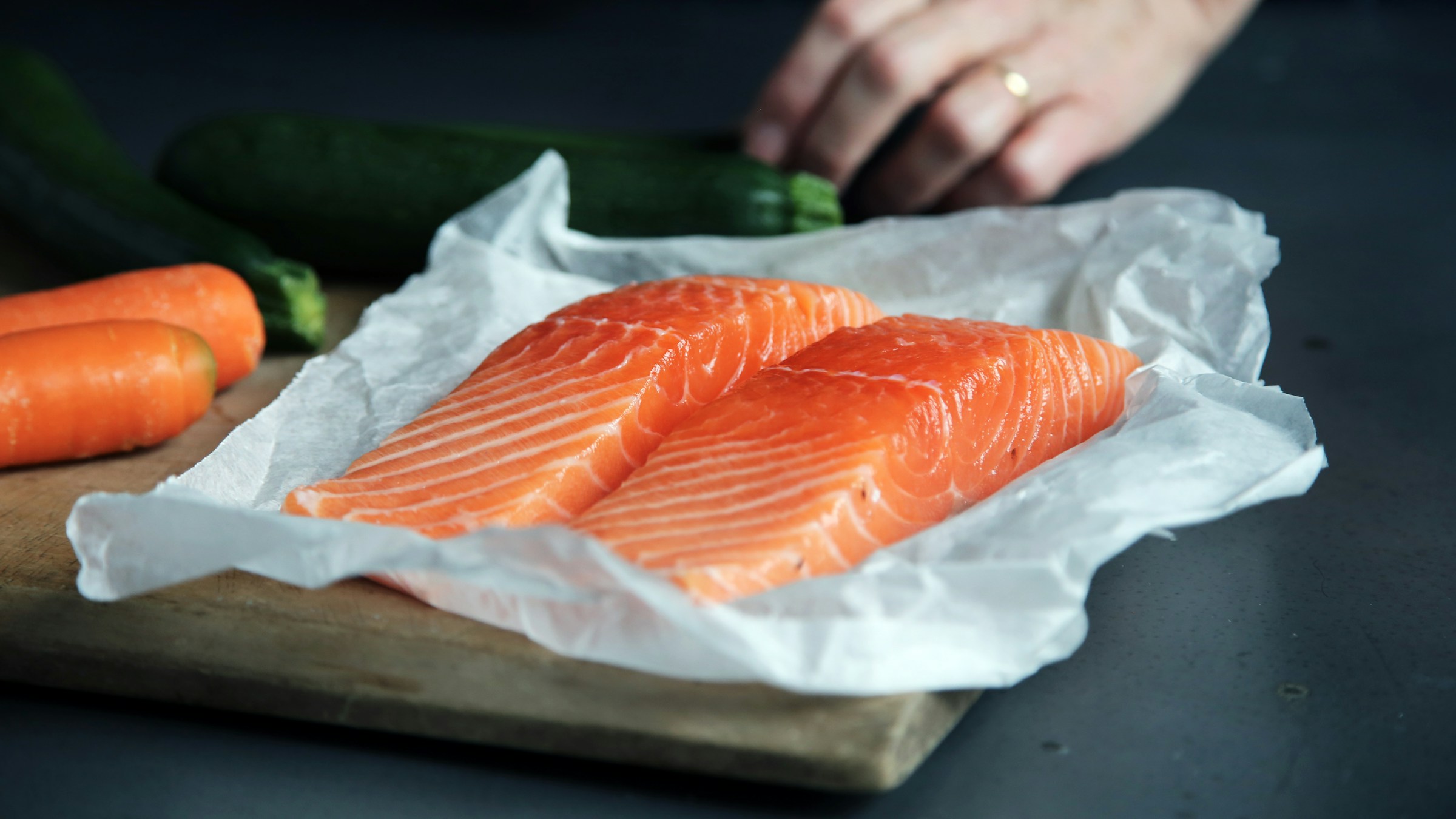The first time I tried cooking salmon, I overcooked it so badly it was practically jerky. No matter how much I watched the pan or adjusted the heat, I always seemed to end up with something dry and disappointing. Then I came across a different way to cook salmon via sous vide and my salmon started coming out tender, flaky, and packed with buttery flavor every time.
No second-guessing, no poking at fillets hoping they were done, just perfectly cooked fish, thanks to precise temperature control. Now, it’s my go-to method, whether I’m making a quick weeknight dinner or trying to impress at a dinner party. Learning how to prepare sous vide salmon is going to up your game immensely; here are the top tips for perfect execution.
How to prep and season your salmon fillets

Before sealing your salmon for sous vide cooking, you’ve got to season it properly. The right combo of seasoning and herbs will enhance its delicate flavor without overpowering it.
Start with the following:
- Fresh salmon fillets (skin-on or skinless)
- Salt and ground black pepper
- Olive oil or butter
- Optional aromatic add-ons: lemon slices, garlic, fresh dill, or parsley
- Optional marinades: miso, soy sauce, or teriyaki glaze
Steps:
- Pat the fillets dry with a paper towel to make sure the seasoning sticks, otherwise, you could compromise the flavoring if there’s too much moisture on the surface of the fish.
- Don’t be afraid to get busy with the salt and pepper, but don’t go overboard. The sous vide process enhances flavors, so a little seasoning goes a long way.
- Add things like lemon slices, dill, or garlic directly onto the fillet for added depth.
- Lightly coat the fish with olive oil or butter to prevent sticking and improve the texture.
Getting the temperature and timing right

Sous vide allows you to cook salmon to your preferred level of doneness without the risk of drying it out. Here’s how to choose the right temperature and cooking time:
- Very soft, sashimi-like texture: 110–115°F (43–46°C)
- Tender, slightly translucent center: 120–125°F (49–52°C)
- Flaky, medium doneness: 130–135°F (54–57°C)
- Well done, firm texture: 140°F+ (60°C+)
How long should you cook it?
- Fresh salmon fillets: 30 to 45 minutes
- Thicker fillets (over 1 inch): 45 to 60 minutes
- Frozen salmon: 60 to 70 minutes
Cooking for longer than 70 minutes won’t overcook the fish, but it may alter the texture by making it too soft.
Bagging and submersion techniques

Proper sealing and submersion are essential to even cooking. There are two common ways to prepare your salmon for the water bath.
Vacuum Sealing: This method removes all air from the bag so that the salmon stays fully submerged and cooks evenly. Chef Thomas Keller, MasterClass instructor says you can also use plastic wrap for this step to achieve the same results.
Water Displacement Method:
- Place the salmon in a zip-top bag.
- Slowly lower the bag into the water, allowing the pressure to push the air out.
- Seal the bag just before the opening touches the water.
Once sealed, make sure the salmon stays submerged. If needed, weigh it down with a spoon or clip it to the side of the container.
Finishing the salmon after sous vide

Once your salmon is cooked, it’s time to decide how to finish it. Some prefer to serve it straight from the bag, while others like a quick sear for added texture.
Searing for a crispy exterior:
- Heat a skillet over medium-high heat and add a small amount of oil.
- Sear the salmon for 30 seconds per side, skin-side down first, until golden brown.
- Be gentle when flipping because sous vide salmon is delicate.
Serving without searing:
If you prefer a softer, poached texture, simply remove the salmon from the bag and serve as-is. Garnish with fresh herbs, a squeeze of lemon, or a drizzle of sauce. If you don’t finish everything, there are a ton of ways to reheat the salmon so that it’s just as good the next day.
Best sauces and seasoning variations

Salmon pairs well with a variety of flavors. Here are some ideas to enhance your dish.
- Lemon butter sauce
- Dill and yogurt sauce
- Teriyaki glaze
- Garlic miso butter
Seasoning variations
- Cajun-style: Add smoked paprika, garlic powder, and cayenne pepper.
- Mediterranean: Use oregano, lemon zest, and olive oil.
- Asian-inspired: Marinate with soy sauce, ginger, and sesame oil.
Choosing the best salmon for sous vide

The best results come from high-quality fish. Wild-caught salmon has a firmer texture and deeper flavor, so that’s always a great option. Farm-raised salmon is also good, contrary to what you may have heard. It’s milder and fattier, making it extra buttery, so that’s my second recommendation if you can’t get wild-caught. You’ll want to avoid salmon that smells overly fishy or has dull, discolored flesh.
Best side dishes for sous vide salmon

A great piece of salmon deserves equally great side dishes. Here are some top choices:
- Roasted asparagus with lemon
- Garlic butter mashed potatoes
- Quinoa with herbs and feta
- Steamed rice with sesame seeds
Flawless salmon, every time

Sous vide takes all the guesswork out of cooking salmon, delivering a tender, flavorful result for every occasion. Whether you like it silky and rare or flaky and well done, this method guarantees consistency. Try it with different seasonings and sauces to find your perfect combination, and enjoy a restaurant-quality meal from the comfort of your home.




